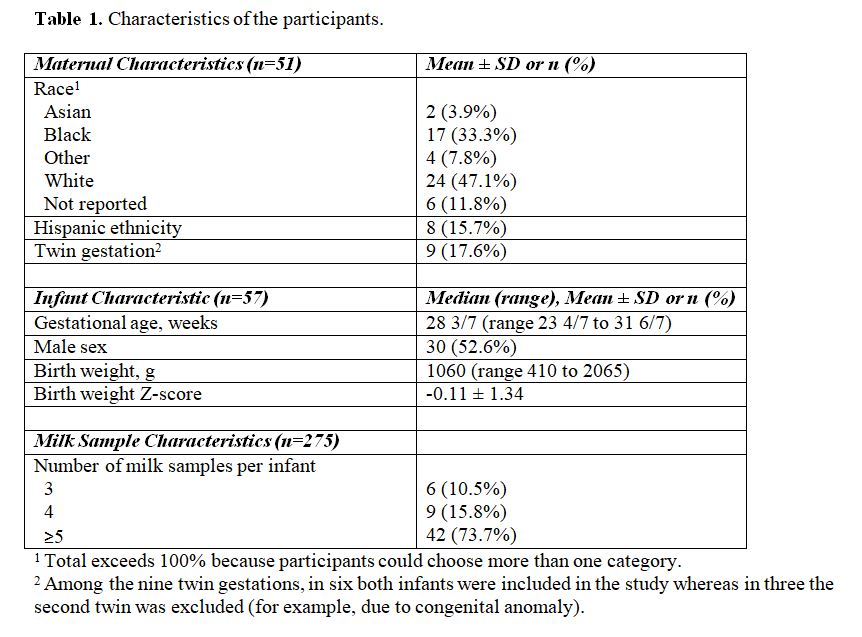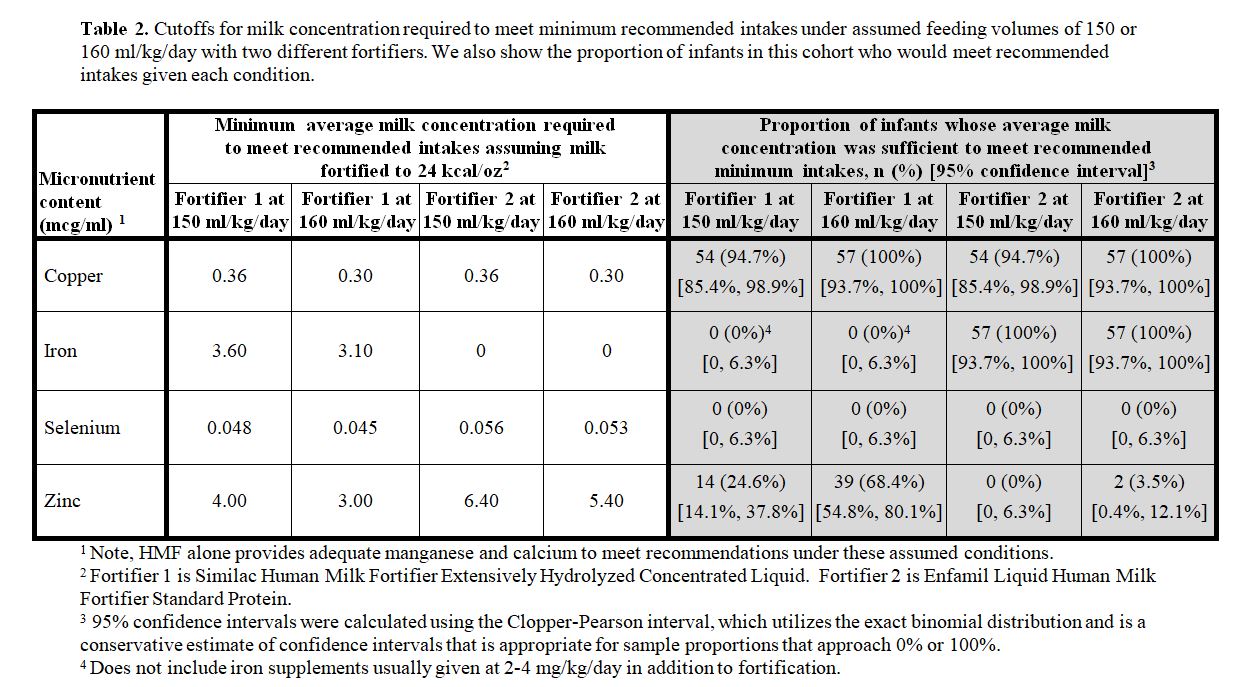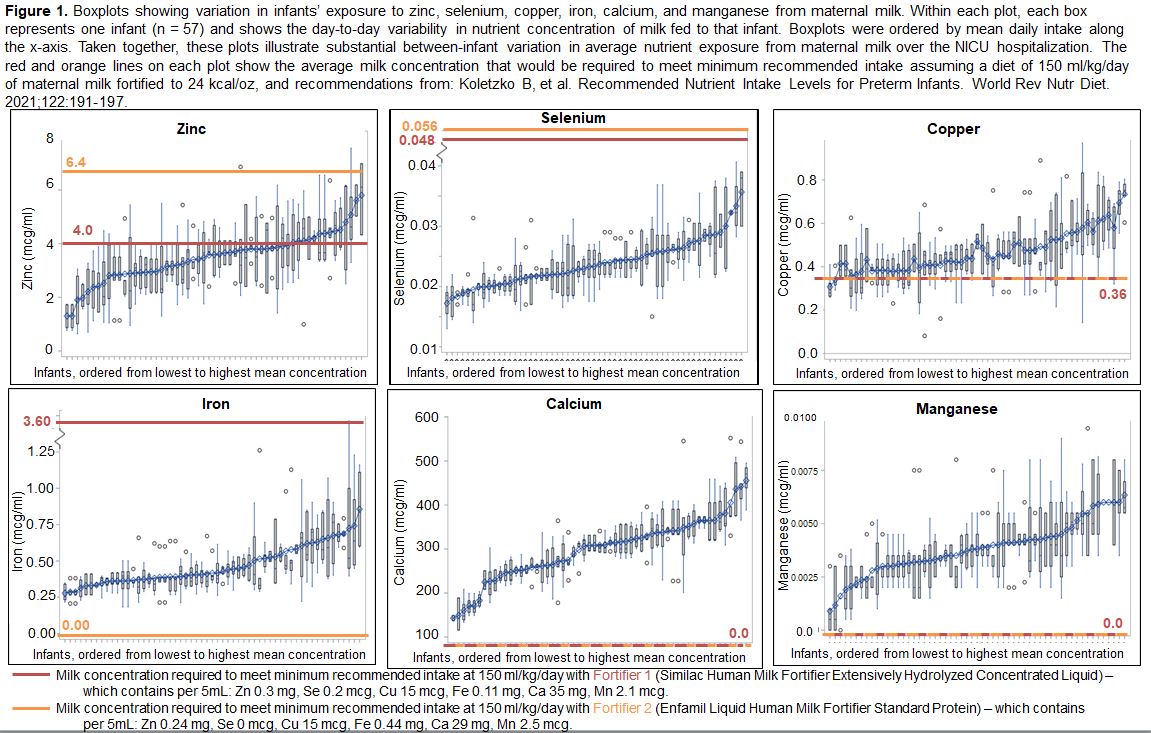Neonatology
Session: Neonatal General 4: Nutrition, Feeding, and Growth
100 - Variability in micronutrient content of human milk fed to preterm infants and implications for meeting recommended micronutrient intake goals
Friday, May 3, 2024
5:15 PM - 7:15 PM ET
Poster Number: 100
Publication Number: 100.25
Publication Number: 100.25

Katherine A. Bell, MD (she/her/hers)
Instructor of Pediatrics
Brigham and Women’s Hospital
Boston, Massachusetts, United States
Presenting Author(s)
Background: Very preterm infants are vulnerable to nutrient deficits during the neonatal intensive care unit (NICU) hospitalization. Human milk is the preferred diet in this context based on its important health benefits, but requires fortification to address nutrient intake gaps. Little is known about the micronutrient content in human milk or the extent to which fortified preterm human milk meets recommended micronutrient intakes.
Objective: To (1) quantify concentrations of 6 micronutrients (zinc, selenium, copper, iron, manganese, calcium) in maternal milk fed to very preterm infants in the NICU, and (2) determine the proportion of infants meeting recommended intakes with routine fortification.
Design/Methods: In a single-center cohort, we studied milk fed to 57 infants born < 32 weeks gestation. We froze milk samples collected on day of life 14, 21, 28, 42 and at 36 weeks postmenstrual age, and determined micronutrient content with inductively-coupled plasma-mass spectrometry. We plotted between- and within-infant variability in milk nutrient concentrations using box plots. We calculated average nutrient concentrations of the milk samples fed to each infant, and estimated infants’ micronutrient intake assuming a standard feeding regimen of 150-160 ml/kg/day fortified to 24 kcal/oz with commercially available human milk fortifiers (HMF). We compared estimated intake (from unfortified milk plus HMF) to the minimum recommended micronutrient intakes from Koletzko, et al. World Rev Nutr Diet 2021, and estimated 95% confidence intervals around the proportion of infants expected to meet recommended intake.
Results: We analyzed 275 milk samples (Table 1). Milk micronutrient content varied between infants and within each infant over time (Fig 1). No infant met recommendations for selenium intake (Table 2). Few infants (0-24.6% of cohort depending on HMF used) met recommended zinc intake at 150 ml/kg/day; increasing feeding volume to 160 ml/kg/day would substantially increase the proportion of infants meeting zinc targets to 68.4% for fortifier 1. Iron intake varied with HMF used, as expected. In contrast, 94.7%-100% of infants met copper recommendations.
Conclusion(s): Micronutrient content of human milk is highly variable and leads to variable intake among infants. Routine fortification may not meet current recommended micronutrient intakes, particularly for selenium and zinc. Feeding larger volumes of fortified milk could address certain nutrient gaps. Our results have implications for the design of optimal fortification strategies to meet preterm infants’ micronutrient needs.



